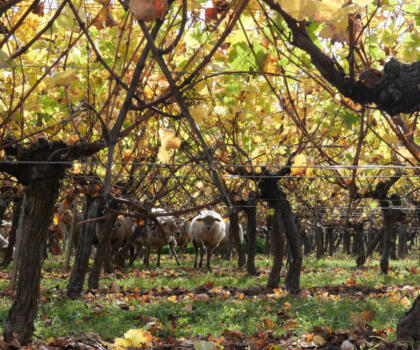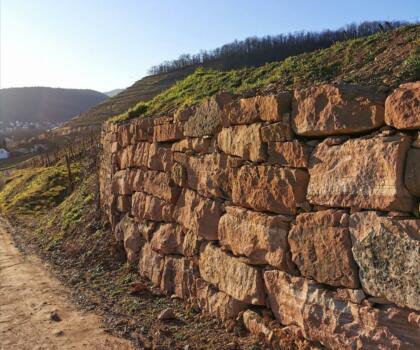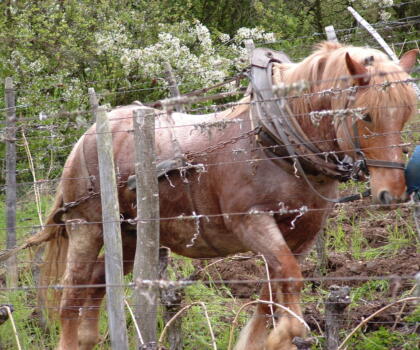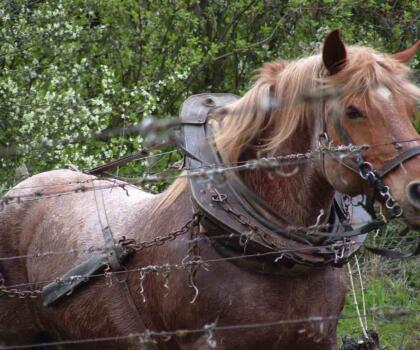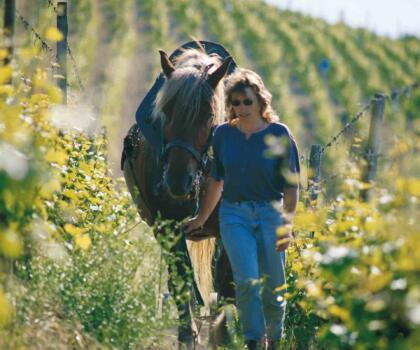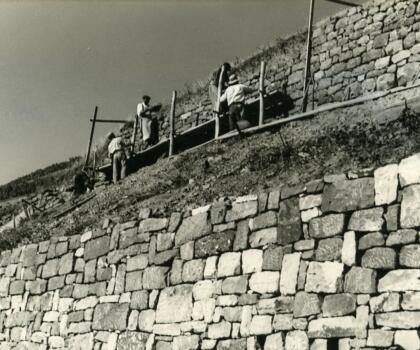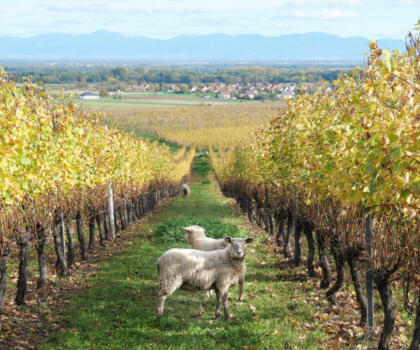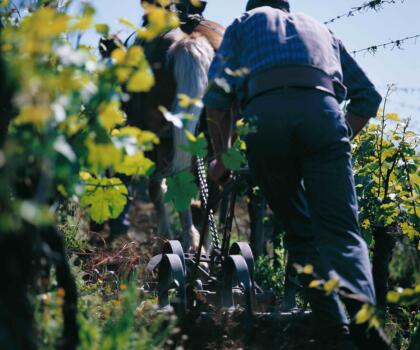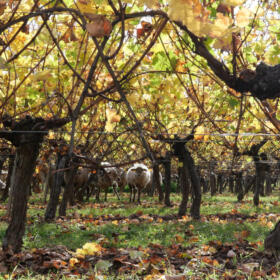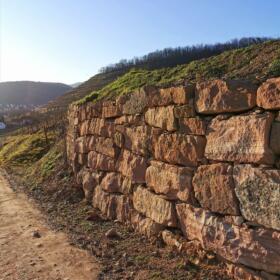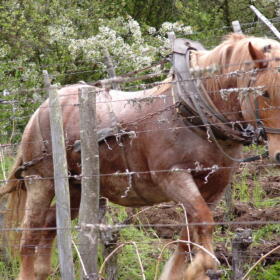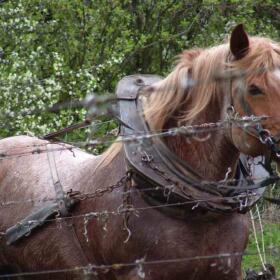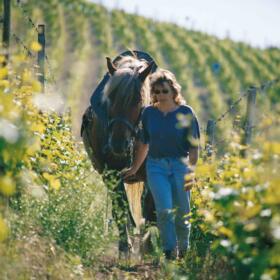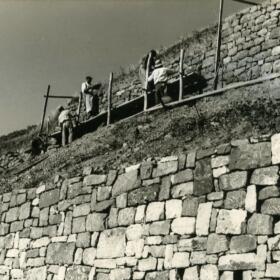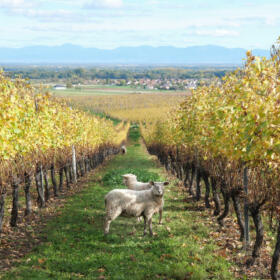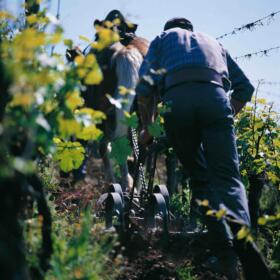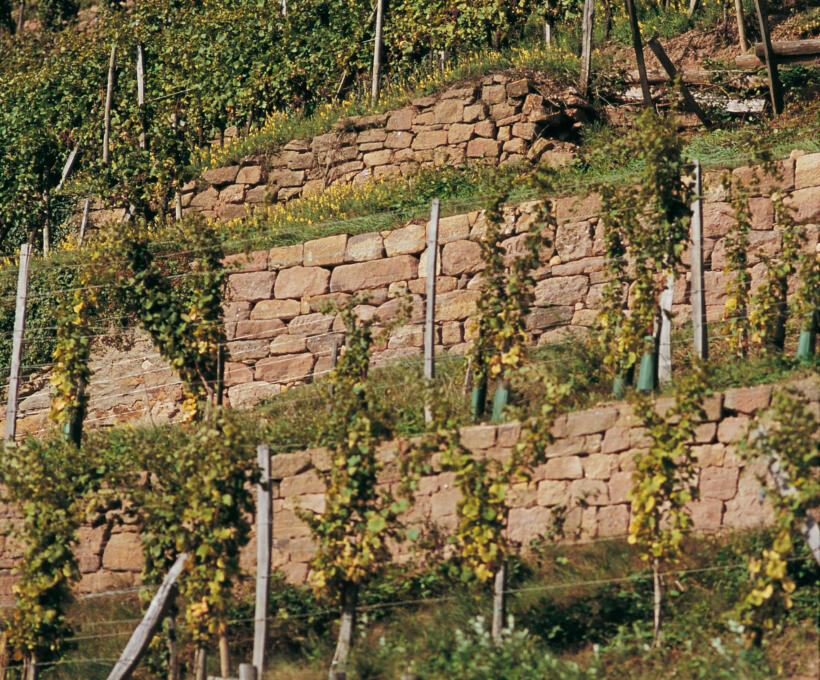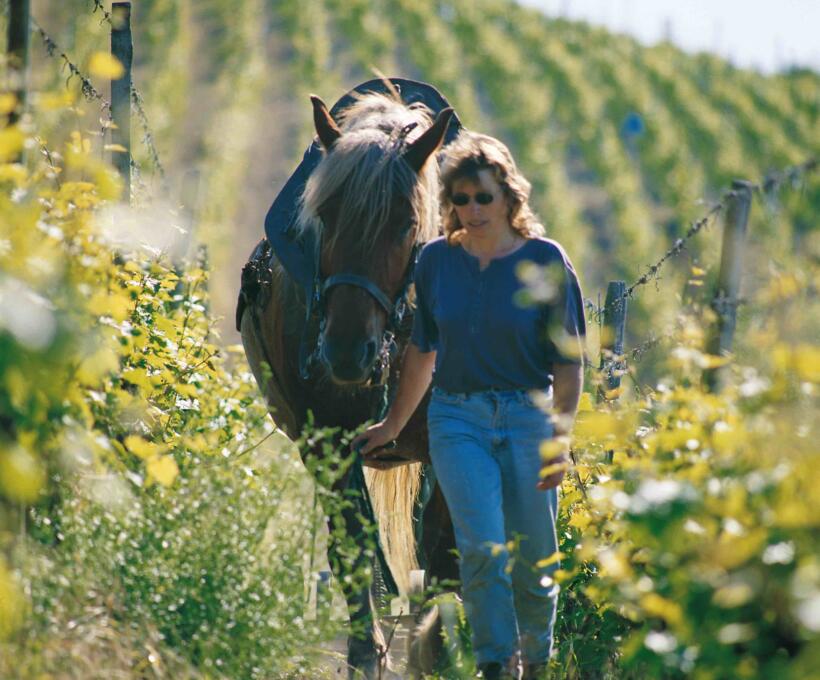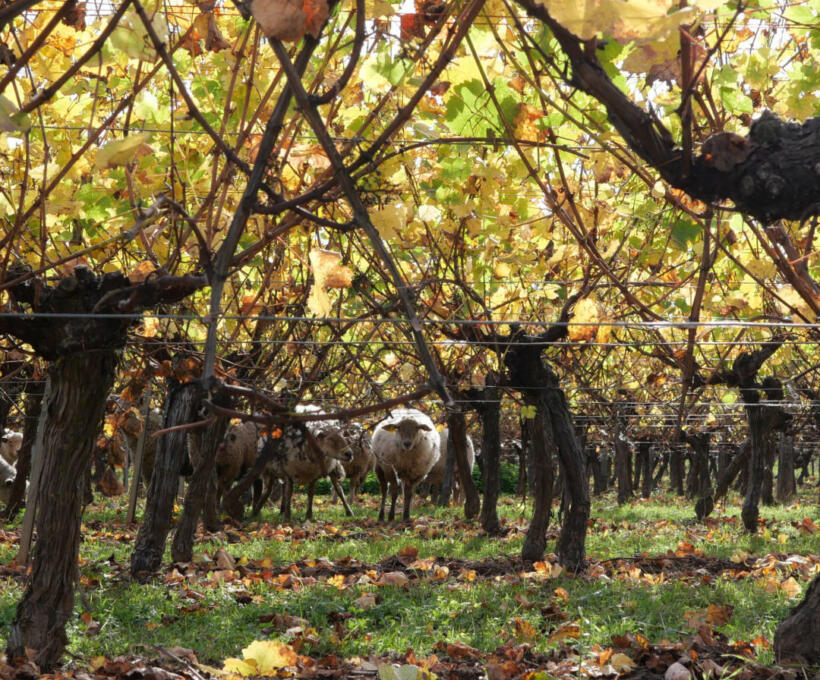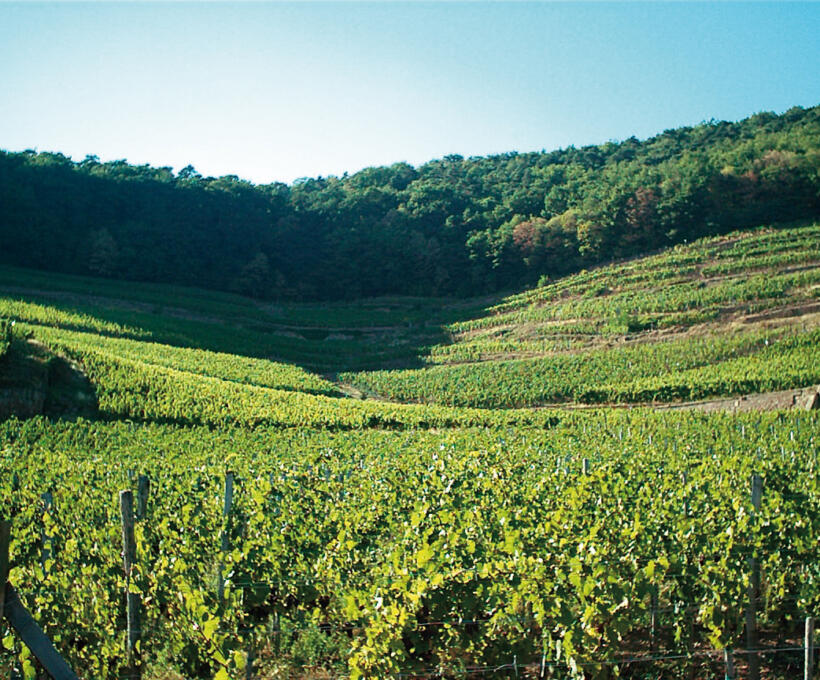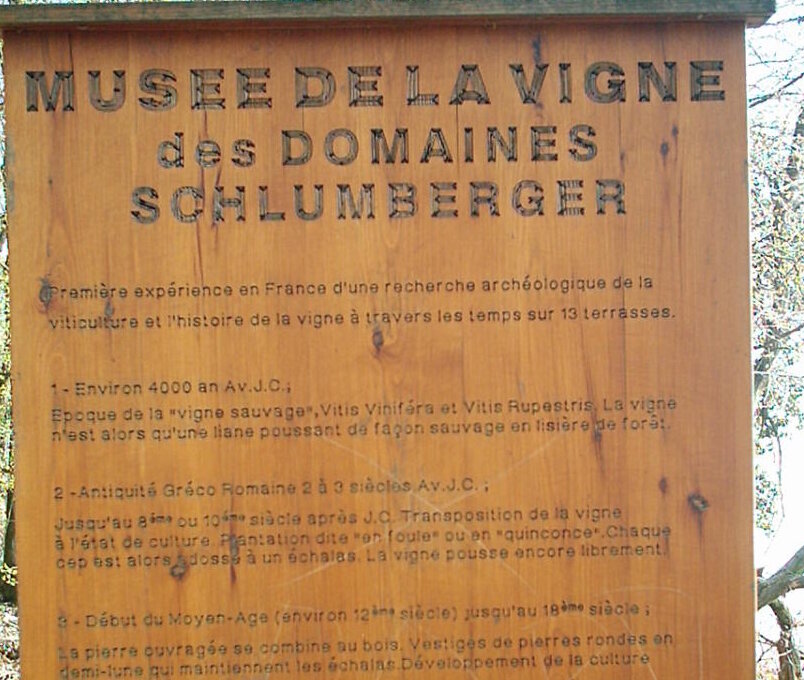Maintenance of the walls
To reduce the natural erosion of the sandy soils, the vineyards are laid out in terraces supported by 50 kilometres of dry stone walls made of Vosges sandstone. Built according to the Roman principle of opus incertum (random work), these works of art are maintained throughout the year by a team of highly qualified masons.
The longevity of the structure and its ability to reduce natural erosion depend on the quality of the cut and fit of each stone. The walls contribute to the biodiversity of the vineyard by maintaining the presence of numerous green lizards.
Horses
Working with a horse avoids the need for a ploughing shoe. And, while it’s true that the pressure exerted on the soil by a horse in action is greater (per square centimetre) than that of a tractor, its bearing surface is virtually non-existent. What’s more, the ploughing tool is placed behind the animal, so any compaction caused by its passage can be corrected immediately.
The biological, chemical and physical life of the soil is reactivated. The agronomic potential of the soil is better exploited. With an aerated structure, run-off from excess rain is limited. The soil is prepared for better water infiltration, which builds up reserves deep down. Finally, working the soil with a horse creates a soil structure that is much better suited to the health of the vines, whose root system penetrates deep into the soil. It has a better water supply. The vines are more vigorous.
Sheep
The initial results of agro-pastoralism are encouraging. There has been a sharp reduction in herbicide treatments and the number of tractor passes. What’s more, the new grass management resulting from pastoralism helps to limit run-off and erosion. It also creates better conditions for biodiversity in the vineyards.
Forest
An integral part of our estate, the forest overlooking all of our hillsides is a veritable hotbed of biodiversity. A natural habitat for many species, it is home to insects, birds, mammals and reptiles, and provides a natural regulator to help combat pests. What’s more, the presence of the forest provides constant, regular and natural hydration for our plots below, limiting the water stress that is becoming increasingly frequent with global warming.
The Historical Vine Museum
Developed and set up in 1989 by Eric Beydon-Schlumberger, the aim is to retrace the immutable continuity of the vine from its origins to the present day and thus pay it the tribute it deserves. This open-air ‘museum’, perched on the highest point of the Kitterlé Grand Cru, is open to all and is intended to be, and can only be, resolutely living and evolving. It can be a place of reflection and humanism, a simple destination for a walk, or an encounter with our own origins, those of humanity…

